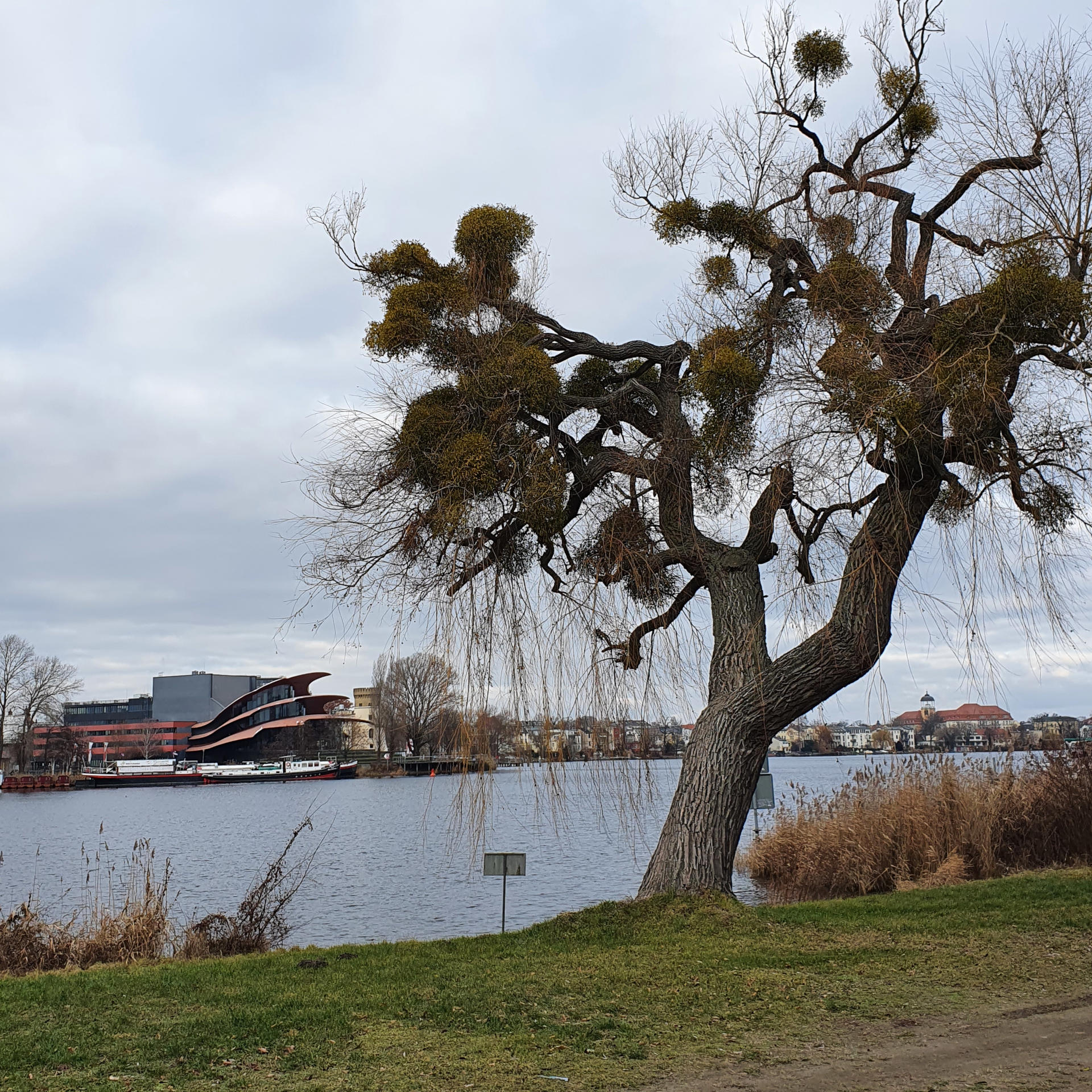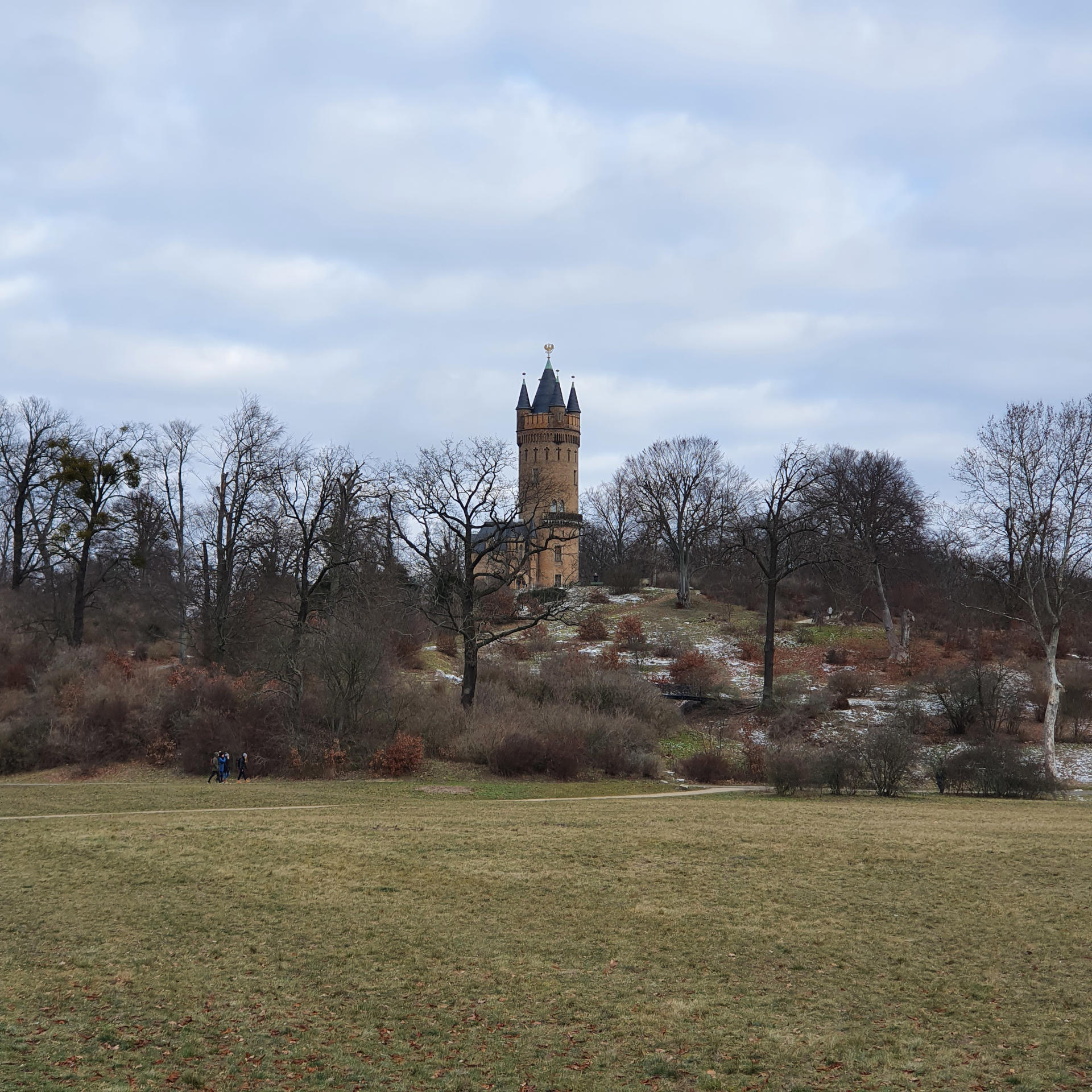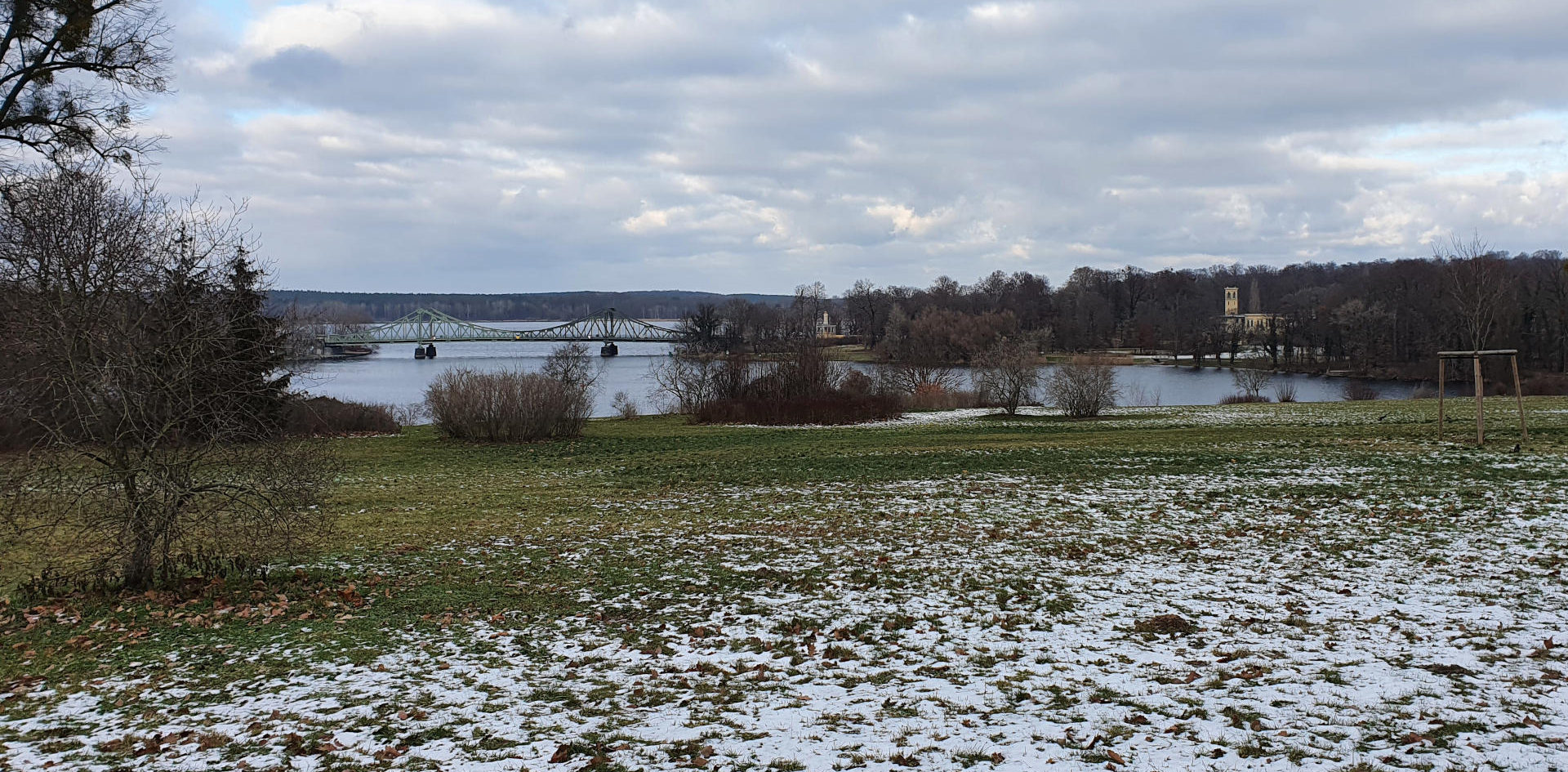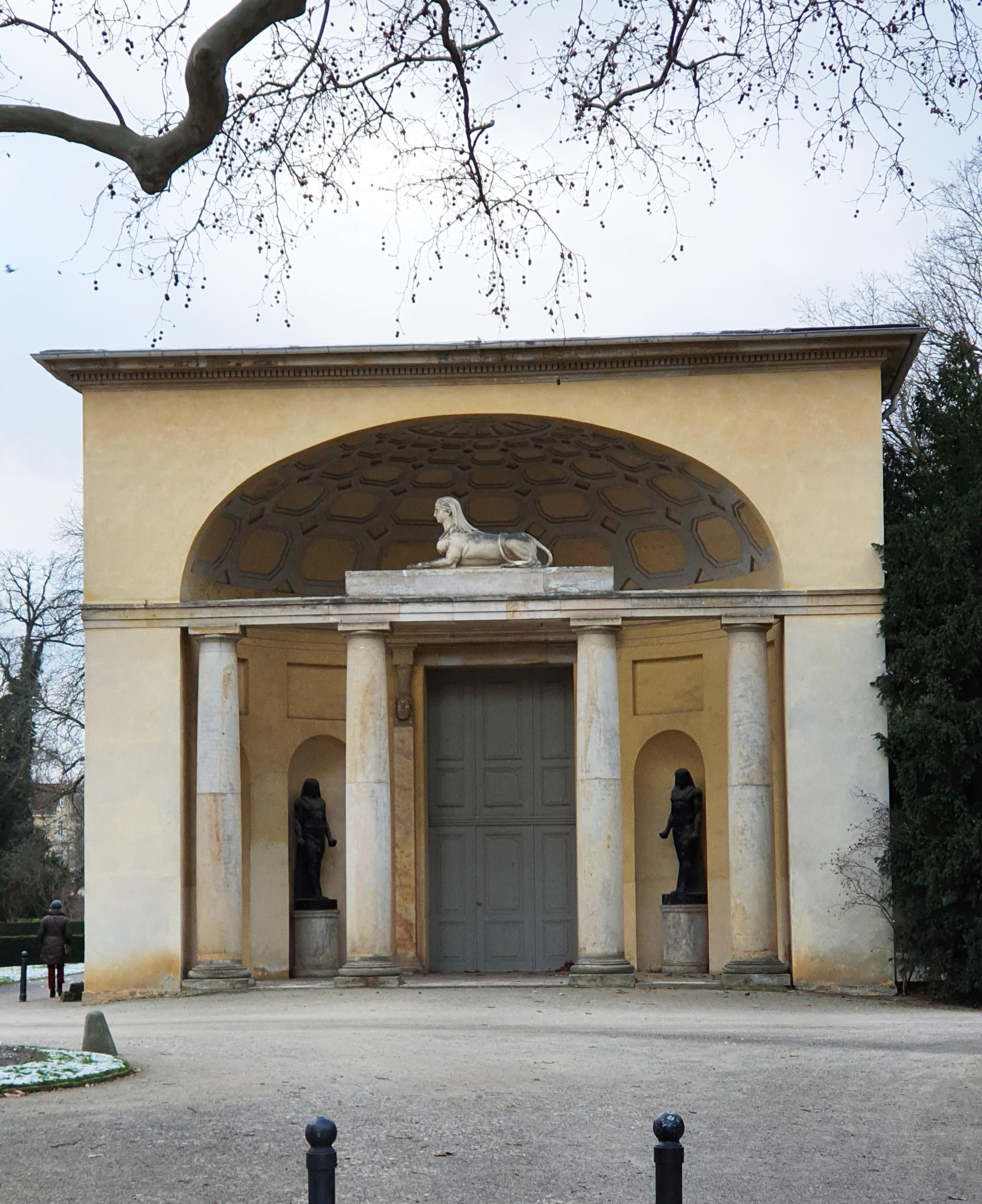While lockdown is keeping the museums closed for now, monuments are like the museum collection of the outdoors! I decided to get out of the city and visit Potsdam, the green oasis near Berlin. The extra nature there gladdens my heart: there is a lot more space and greenery than in Berlin proper, and much more water (the Havel river and its many bays). What’s more, this beautiful landscape is strewn with 19th-century monuments. Inspired by Slow Travel Berlin’s recent walk in this area, I planned a big loop hitting some of the major monuments along the way. With numerous quick photo shoots and a VERY quick picnic lunch in arctic temperatures, it took me 2.5 hours.
Babelsberg Palace was a summer home for the Prussian crown prince William I and his wife. It has a great view, but it’s sure windy on that hilltop.
The view from the Palace encompasses some other great monuments: left, Glienicke Bridge, the so-called Bridge of Spies during the Cold War. Center, a tea pavilion for guests of Glienicke Palace. Right, Glienicke Palace.
The entrance to the Orangerie in the New Garden (point B on my map) contains Egyptian-style sculpture: a sphinx and two standing male figures. Quite relevant to the academic book I’m reviewing right now, Beyond Egyptomania!
Here’s a highlight reel of the monuments I saw! Astonishingly, the pyramid monument was actually used as a refrigerator: underneath it is a basement 5 meters deep that kept food and party ice from the local lake cold!
What outdoor museums have you discovered? Share in the comments below!





